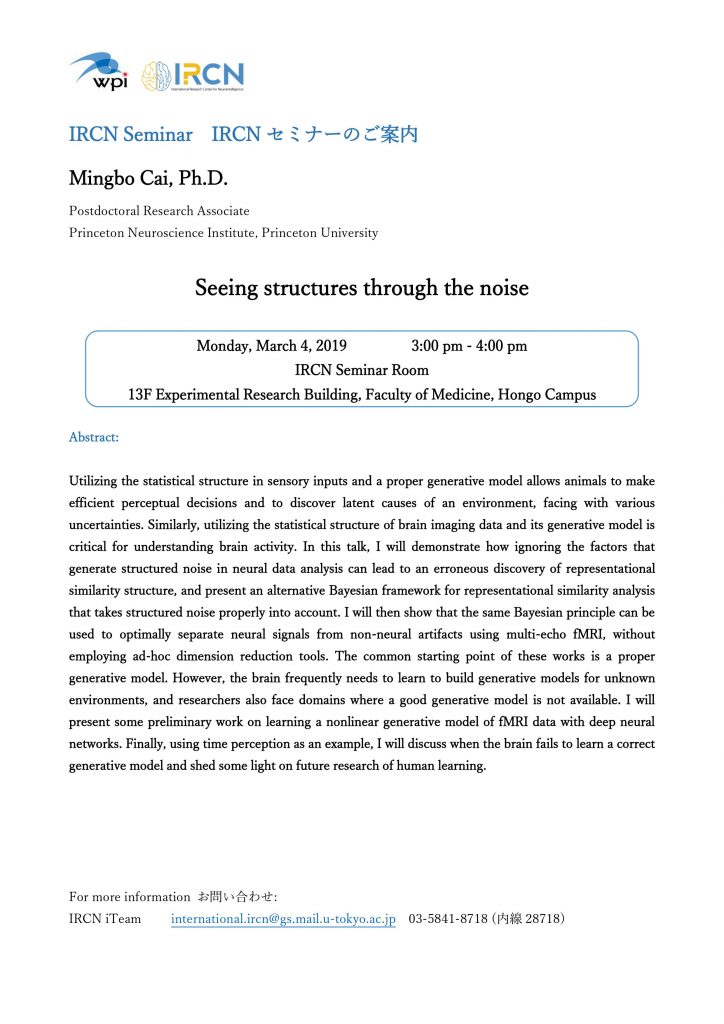Date: March 4, 2019 15:00-16:00
Venue: IRCN Seminar Room@13F, Faculty of Medicine Experimental Research Building, School of Medicine, Hongo Campus
Speaker: Mingbo Cai
Postdoctoral Research Associate
Princeton Neuroscience Institute, Princeton University
For more information: IRCN iTeam international.ircn@gs.mail.u-tokyo.ac.jp
*Pre-registration is required to this seminar. Please contact us if you are interested.
Abstract:
Utilizing the statistical structure in sensory inputs and a proper generative model allows animals to make efficient perceptual decisions and to discover latent causes of an environment, facing with various uncertainties. Similarly, utilizing the statistical structure of brain imaging data and its generative model is critical for understanding brain activity. In this talk, I will demonstrate how ignoring the factors that generate structured noise in neural data analysis can lead to an erroneous discovery of representational similarity structure, and present an alternative Bayesian framework for representational similarity analysis that takes structured noise properly into account. I will then show that the same Bayesian principle can be used to optimally separate neural signals from non-neural artifacts using multi-echo fMRI, without employing ad-hoc dimension reduction tools. The common starting point of these works is a proper generative model. However, the brain frequently needs to learn to build generative models for unknown environments, and researchers also face domains where a good generative model is not available. I will present some preliminary work on learning a nonlinear generative model of fMRI data with deep neural networks. Finally, using time perception as an example, I will discuss when the brain fails to learn a correct generative model and shed some light on future research of human learning.
Details are below or click here(PDF).



